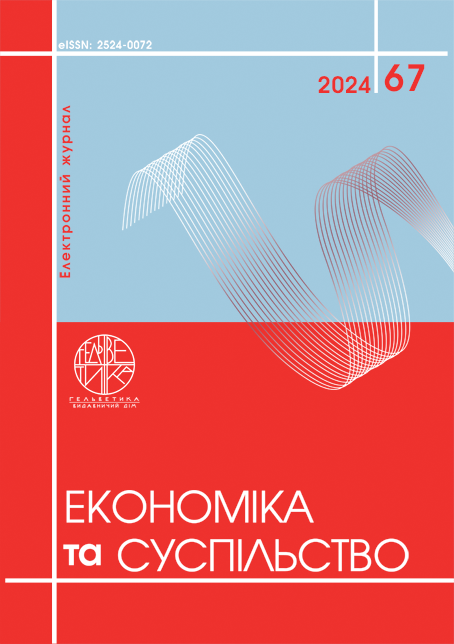COMPARATIVE ANALYSIS OF ORGANISATIONAL CHANGE MANAGEMENT MODELS
Abstract
Changes are an important element of modern organizations: they facilitate adaptation to evolving market conditions, ensure development, increase competitiveness, particularly in the face of economic instability. For successful implementation of organizational changes, it is advisable to use existing change management models or create one’s own model based on them. This article examines the features and elements of four popular change management models. Kurt Lewin's three-step model of change is arguably the most famous and influential change management concept. It is simple and universal. It provided foundation for other approaches and consists of the following steps: unfreezing, moving and refreezing. John Kotter created his eight-step change management model after observing changes in more than 100 companies. It is well structured, practical, and the eight steps are: establishing a sense of urgency, creating the guiding coalition, developing a vision and strategy, communicating the change vision, empowering employees for broad-based action, generating short-term wins, consolidating gains and producing more change, anchoring new approaches in the culture. The Prosci ADKAR model focuses on individual change and consists of the following building blocks: awareness, desire, knowledge, ability and reinforcement. The McKinsey 7-S model offers a comprehensive organisational analysis tool that examines these seven elements: strategy, structure, systems, style, staff, skills, shared values. When choosing a change management model, it is necessary to take into account its features, as well as the structure and culture of the organization, available resources, the nature and complexity of the changes, etc. A comparative analysis of the aforementioned models identifies their strengths and weaknesses, along with proposals for selecting and adapting change management models to meet the specific needs of organizations. The COVID-19 pandemic and the full-scale war in Ukraine have created a number of new challenges and opportunities for many organizations, requiring effective change management. Therefore, further research is needed to develop a change management model that takes into account the specific needs of organizations in the context of economic instability.
References
Буднік М. М., Іванова Я. Ю. Підходи та моделі управління змінами на підприємстві. Бізнес Інформ. 2020. № 10.
Петрова І. Л., Макаркіна Г. В., Терон І. В. та ін. Управління змінами в умовах інноваційного розвитку: Колективна монографія. Том 5. Київ : ВНЗ «Університет економіки та права «КРОК», 2012. 268 с.
Kurt Lewin. Frontiers in Group Dynamics: Concept, Method and Reality in Social Science; Social Equilibria and Social Change. Human Relations, № 1-1, June 1947.
Bernard Burnes. The Origins of Lewin’s Three-Step Model of Change. The Journal of Applied Behavioral Science, № 56-1, March 2020.
J. P. Kotter. Leading Change: Why Transformation Efforts Fail. Harvard Business Review, January 2007.
Steven H. Appelbaum. Back to the future: Revisiting Kotter's 1996 change model. Journal of Management Development, № 31-8, August 2012.
The Prosci ADKAR Model. URL: https://www.prosci.com/methodology/adkar
Jeffrey M. Hiatt. ADKAR: A Model for Change in Business, Government and our Community // Prosci Research, 2006.
Thomas J. Peters, Robert H. Waterman Jr. In Search of Excellence: Lessons from America's Best-Run Companies. Harper Business, February 2006.
Derek F. Channon, Adrian A. Caldart. McKinsey 7S model. Strategic Management, № 12, January 2015.
Budnik M. M., Ivanova Ya. Yu. (2020) Pidkhody ta modeli upravlinnia zminamy na pidpryiemstvi. Biznes Inform, № 10.
Petrova I. L., Makarkina H. V., Teron I. V. ta in. (2012) Upravlinnia zminamy v umovakh innovatsiinoho rozvytku: Kolektyvna monohrafiia. Tom 5. Kyiv: VNZ «Universytet ekonomiky ta prava «KROK», 268 p.
Kurt Lewin (1947) Frontiers in Group Dynamics: Concept, Method and Reality in Social Science; Social Equilibria and Social Change. Human Relations, № 1-1, June.
Bernard Burnes (2020) The Origins of Lewin’s Three-Step Model of Change. The Journal of Applied Behavioral Science, № 56-1, March.
J. P. Kotter (2007) Leading Change: Why Transformation Efforts Fail. Harvard Business Review, January.
Steven H. Appelbaum (2012) Back to the future: Revisiting Kotter's 1996 change model. Journal of Management Development, № 31-8, August.
The Prosci ADKAR Model. URL: https://www.prosci.com/methodology/adkar
Jeffrey M. Hiatt (2006) ADKAR: A Model for Change in Business, Government and our Community. Prosci Research,
Thomas J. Peters, Robert H. Waterman Jr. In Search of Excellence: Lessons from America's Best-Run Companies. Harper Business, February 2006.
Derek F. Channon, Adrian A. Caldart (2015) McKinsey 7S model. Strategic Management, № 12, January.

This work is licensed under a Creative Commons Attribution 4.0 International License.


